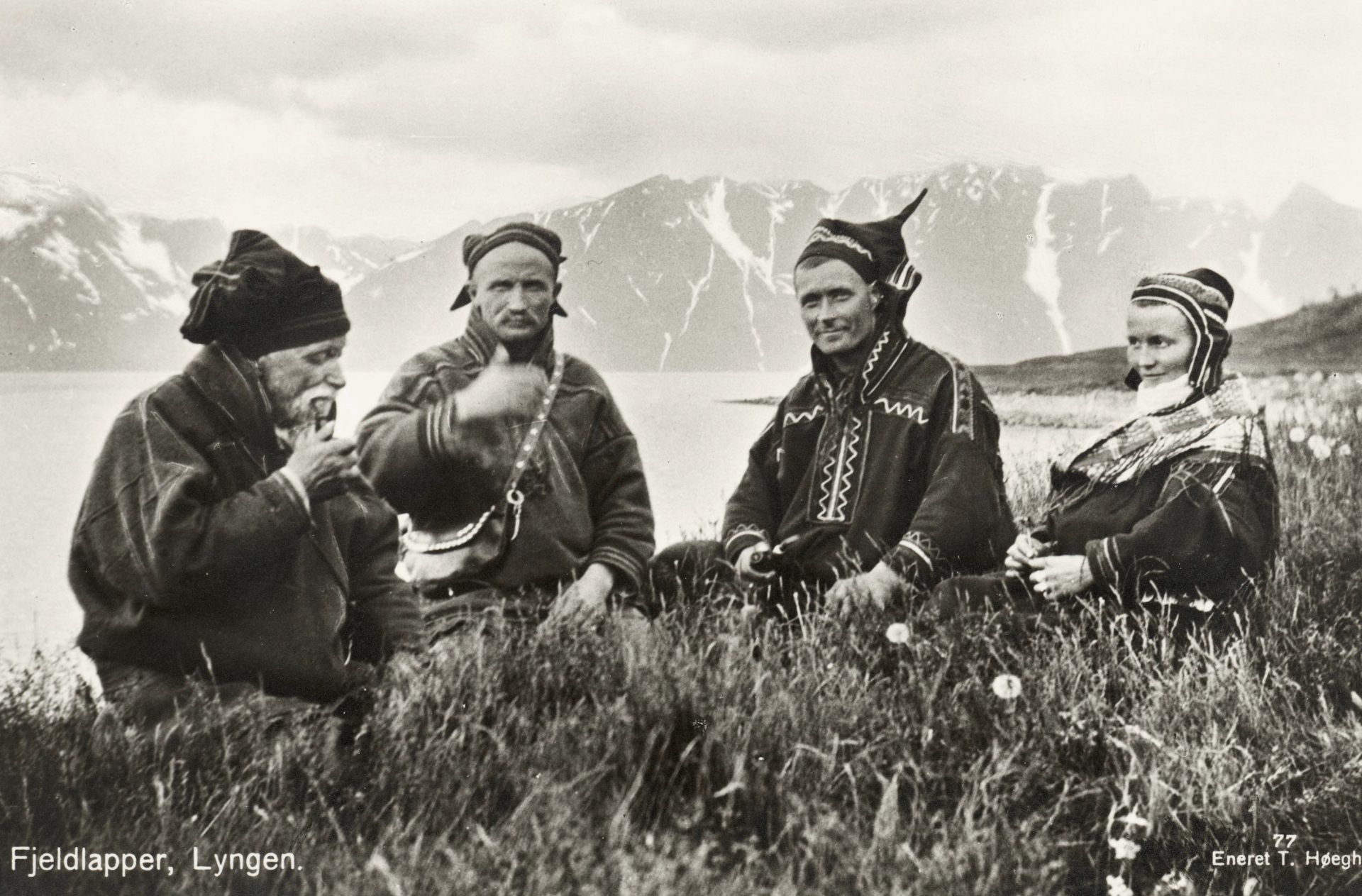Sapmi is the homeland of the Sami people, also known as Saami or Lapps. “Lapp” is now generally avoided because it had become a derogatory term in the Nordic languages, although in English it was always completely neutral. Many people still refer to parts of Sapmi as Lapland.
Sapmi includes parts of four different nation states: from west to east Norway, Sweden, Finland, and Russia. The western boundary is formed by the Norwegian Sea, the northern by the Barents Sea, and the eastern by the White Sea.
The southern limits of the area have, sadly, been shifting northwards for many centuries, as Nordic and other non-indigenous peoples have taken over more and more of the Scandinavian and Kola peninsulas. Even in Sapmi, the Sami are these days very much in a minority.
We can probably reckon with there being nine different Sami languages, divided into two main subgroupings: western and eastern. The West Sami languages are, from south to north, South Sami – whose range extends to the south of Trondheim (Norway) and Östersund (Sweden), Ume Sami, Pite Sami, Lule Sami, and North Sami (which are all spoken in Norway and Sweden).
The East Sami grouping consists of Skolt Sami, in Norway and Finland, Inari Sami in Finland, and the Kildin and Ter Sami languages in Russia. North Sami has by far the largest number speakers, 20,000- 25,000. The majority are in Norway, with about 5,000 in Sweden, and 2,000 in Finland. Some of the other languages are severely endangered, especially in Russia, where there are now only about 2,000 Sami people.
The main centre of Sami culture in Russia is Lovozero, inland from Murmansk on the Kola peninsula, where Kildin Sami is the main indigenous language. In Finland the major centre is Inari, in the far north very close to the Norwegian border, where three indigenous languages are spoken: Inari Sami, Northern Sami, and Skolt Sami.
The main Sami centre in Sweden is around Jokkmokk, where Lule Sami is the indigenous language. And North-Sami-speaking Kautokeino and Karasjokk are the major centres in Norway; Kautokeino (Guovdageaidnu in Sami) has about 3,000 inhabitants, while Karasjokk (Kárášjohka) is slightly smaller.
The Sami languages are part of the wider Finno-Samic language family, along with Finnic languages like Finnish and Estonian. This is a subgroup of the large Uralic language family, which includes Hungarian and several languages of northern Eurasia, including the Siberian Samoyedic languages such as Nenets. The related Samoyedic Nganasan language is spoken by a people who were originally reindeer hunters rather than herders, by the Arctic Ocean on the Taymyr Peninsula at the northernmost edge of the Eurasian landmass. Their homeland is nearly 4,000 kilometres from Sapmi, an indication of the extent of the migrations which the Uralic languages have undertaken over the millennia.
How far this means that Uralic speaking people themselves migrated over vast distances is not certain. Languages do spread from place to place through “demic diffusion” – the movement of people – but also through “transcultural diffusion”, whereby people gradually adopt the language of their neighbours and abandon their own.
FAR APART
The nine Sami languages form a geographical continuum. Neighbouring varieties are mutually intelligible to varying degrees, but comprehension decreases as the geographical distance between them increases. Even so, the differences in pronunciation, grammar and vocabulary between North Sami and its neighbour Skolt Sami are also large enough to prevent easy communication.
Warning: Illegal string offset 'link_id' in /mnt/storage/stage/www/wp-includes/bookmark.php on line 357
Notice: Trying to get property 'link_id' of non-object in /mnt/storage/stage/www/wp-includes/bookmark.php on line 37








